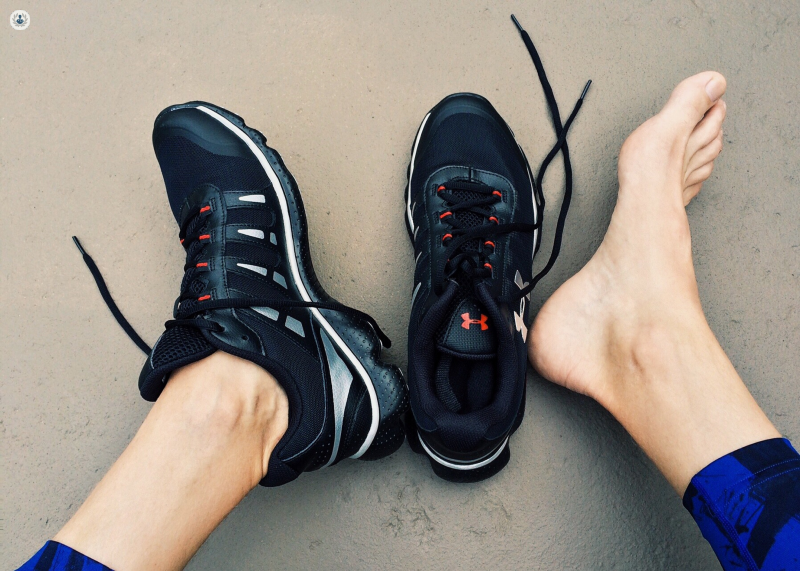How do ankle sprains typically occur?
Escrito por:Here, distinguished foot and ankle surgeon, Mr Kailash Devalia, shares his expert insights regarding ankle sprains, including how they typically occur.

How do ankle sprains typically occur?
Ankle sprains and ligament injuries are common occurrences that can affect individuals of all ages and activity levels. These injuries typically happen when the ankle is twisted or turned in an awkward manner, causing the ligaments that support the joint to stretch beyond their normal range or tear. Ankle sprains can range from mild to severe, depending on the extent of the ligament damage.
The ankle joint is stabilised by several ligaments, with the most commonly injured being the lateral ligaments on the outside of the ankle. These ligaments, including the anterior talofibular ligament (ATFL), the calcaneofibular ligament (CFL), and the posterior talofibular ligament (PTFL), are crucial for maintaining the joint's stability. When an ankle is sprained, these ligaments can be overstretched or torn, leading to pain, swelling, and difficulty bearing weight on the affected foot.
What are the different types of ankle sprains?
Ankle sprains are classified into three grades based on severity. Grade I sprains involve slight stretching and microscopic tearing of the ligament fibers, accompanied by mild tenderness and swelling. Grade II sprains are more severe, with partial tearing of the ligament, resulting in moderate pain, swelling, and bruising of the ankle. Grade III sprains involve a complete tear of the ligament, causing severe pain, swelling, instability of the ankle joint, and often significant bruising.
How are ankle sprains treated?
Immediate treatment for an ankle sprain typically follows the R.I.C.E. protocol: Rest, Ice, Compression, and Elevation. Resting the injured ankle and avoiding activities that cause pain is essential for healing. Ice helps reduce swelling and pain, while compression with an elastic bandage can prevent further swelling. Elevating the ankle above heart level also helps reduce swelling. Over-the-counter pain relievers, such as ibuprofen, can help manage pain and inflammation.
In cases of severe sprains or suspected fractures, it is crucial to seek medical attention. A healthcare provider may recommend imaging tests, such as X-rays or MRI scans, to assess the extent of the injury. Treatment for severe sprains may involve immobilisation with a brace or cast, physical therapy to restore strength and range of motion, and in some cases, surgical intervention to repair torn ligaments.
How can ankle sprains be prevented?
Preventing ankle sprains involves strengthening the muscles around the ankle, improving balance, and wearing appropriate footwear. Athletes should take extra precautions, such as taping or bracing the ankle during high-risk activities. With proper care and rehabilitation, most ankle sprains heal successfully, allowing individuals to return to their normal activities.


